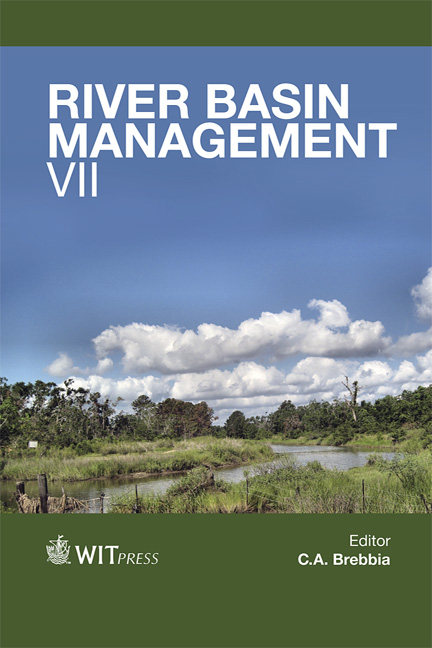The Role Of Slope On The Overland Flow Production
Price
Free (open access)
Transaction
Volume
172
Pages
9
Page Range
63 - 71
Published
2013
Size
485 kb
Paper DOI
10.2495/RBM130061
Copyright
WIT Press
Author(s)
R. Morbidelli, C. Corradini, C. Saltalippi, A. Flammini & R. S. Govindaraju
Abstract
An experimental investigation of the surface runoff and deep flow produced by artificial rainfalls on sloping soil surfaces is presented. Starting from large values of initial moisture content, the relation between these two quantities and slope is examined through 15 experiments carried out using a soil with a sloping surface of 1°, 5° and 10°. A laboratory box 152 cm long, 122 cm wide and 78 cm deep was used. The overland flow was measured in the middle of the flow path, while the deep flow at the slope outlet. The average rainfall rate, r, was generally chosen to be less than the soil saturated hydraulic conductivity, Ks. It was found that for a given rainfall rate greater slopes determine larger surface runoff and smaller deep flow. The observed results are in agreement with those obtained earlier by Essig et al.; however the effect of slope variation appears to be more pronounced because of the different range used for r/Ks and the different soil selected. Current theories and experimental investigations performed by other authors do not explain appropriately the results described in this paper. Lastly, an overall comparison of the results showed here with those presented by Essig et al., obtained by measurements of overland flow at the slope outlet, suggests that the influence of the downstream wall on the amount of surface and deep flow is not significant. Keywords: hill slope hydrology, overland flow, infiltration process, laboratory experiments.
Keywords
Keywords: hill slope hydrology, overland flow, infiltration process, laboratory experiments.





